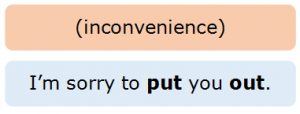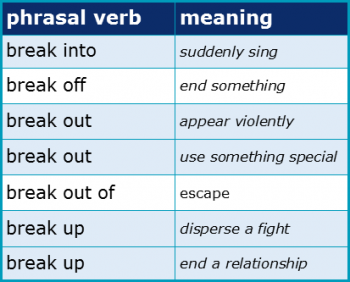What are English phrasal verbs?

This is the first of three chapters about Phrasal Verbs. To complete this reader, read each chapter carefully and then unlock and complete our materials to check your understanding.
– Introduce the concept of phrasal verbs in English
– Discuss the rules of determining phrasal verbs
– Explore why phrasal verbs are challenging for students
Before you begin reading...
-
video and audio texts
-
knowledge checks and quizzes
-
skills practices, tasks and assignments
Chapter 1
One area of grammar that students of English almost always struggle with is in the confident use and identification of phrasal verbs. Not to be confused with verb phrases, a phrasal verb is a combination of a lexical verb and either a preposition or an adverbial particle or both, such as are bolded in the following two examples:


In sentence (a), the verb ‘work’ combines with the adverbial particle ‘out’ to create the meaning ‘solve’. What makes these words a phrasal verb when joined together is that they cannot be separated from each other and maintain meaning. For example, the following expressions would be ungrammatical or their meanings would change:


What additionally makes the combination of a verb and a preposition or particle a phrasal verb is very clear in sentence (b), which uses the expression ‘put out’ to provide the meaning of ‘extinguish a fire’. Clearly, if we were to take the individual meanings of these two words in isolation, then we would expect them in combination to mean ‘place outside’ and not ‘extinguish a fire’:


What these examples show is that a phrasal verb’s meaning is not derived from it’s individual words but from the specific combination of those words together. The following three factors are therefore integral to the identification of phrasal verbs:
(1) A phrasal verb must contain a verb and a preposition or particle (or both).
(2) A phrasal verb will change its meaning if any word is removed.
(3) The meaning of the phrasal verb as a whole cannot be guessed from the meanings of the individual words.
Why are phrasal verbs difficult?
In addition to the fact that a phrasal verb’s meaning cannot be outright guessed and must be learned phrase by phrase, there are three reasons that phrasal verbs are particularly difficult for students of English.
1. Commonality
Phrasal verbs are very common in the English language, especially in informal speech and fiction. By some accounts, roughly one in every five hundred words ever spoken or written in English is a phrasal verb, which means that if a student wishes to better understand or improve their English proficiency, they will have to become confident with using this type of construction. To make the situation even harder, there are many hundreds of phrasal verbs for a student to learn.
2. Similarity
Similarity is another reason that phrasal verbs are often tricky for non-native speakers. For example, from one construction such as ‘put out’, there may in fact be multiple different phrasal verbs (homonyms), with each possessing different meanings and grammar yet the same pronunciation and spelling:






3. Informality
And if that wasn’t enough, one final reason that phrasal verbs are so challenging for students is that they are generally considered to be very informal. What this means is that in an academic context, many of these words are considered as being inappropriate, yet these same phrases are necessary in an informal context.
Just because phrasal verbs are challenging doesn’t mean they cannot be learned, however. Chapter 2 categorises these phrasal verbs so that it’s easier to know both when and how to use them, and Chapter 3 provides lists for the most common informal (conversational) and formal (academic) phrasal verbs.
Materials
Once you’ve completed all three chapters about phrasal verbs, you might also wish to download our beginner, intermediate and advanced worksheets to test your progress or print for your students. These professional PDF worksheets can be easily accessed for only a few Academic Marks.
Media
You may also wish to download any relevant PowerPoint activities, teacher resources or audio and video recordings we’ve created about this topic for only a few Academic Marks.
Collect Academic Marks
-
100 Marks for joining
-
25 Marks for daily e-learning
-
100-200 for feedback/testimonials
-
100-500 for referring your colleages/friends